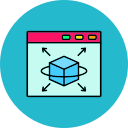Digital home design represents the convergence of technology and creativity, transforming the way we conceptualize, plan, and build our living spaces. This innovative approach uses digital tools and online platforms to make home design more accessible, efficient, and customizable than ever before. Whether renovating a single room or designing an entirely new house, digital home design opens up a world of possibilities for homeowners, designers, and architects. As technology continues to evolve, digital methods are increasingly shaping the future of interior and architectural design, providing a seamless experience from inspiration to implementation.
The Evolution of Home Design in the Digital Age
From Hand Sketches to Smart Software
Home design once relied heavily on hand-drawn sketches and physically constructed models, demanding significant expertise and resources. With the introduction of computer-aided design (CAD), the landscape changed, enabling designers to create precise, scalable renderings quickly. Today, cloud-based platforms and intelligent software further simplify adjustments and revisions, allowing designers to experiment with layouts and styles in real time. This shift not only accelerates project timelines but also reduces the margin for error, ensuring homeowners can confidently approve plans before any construction begins.
Online Inspiration and Global Trends
The digital age has made it easier than ever to draw inspiration from global design trends. Websites, social media, and virtual galleries expose homeowners and professionals to a wide array of styles, materials, and ideas. By exploring online portfolios or participating in digital communities, individuals gain access to creative solutions that reflect diverse tastes and cultures. Additionally, digital tools enable users to visualize international influences within their own spaces, making innovation and personalization central to modern home design.
Virtual Collaboration and Communication
Digital platforms facilitate seamless communication among architects, designers, contractors, and clients. Shared workspaces, instant messaging, and synchronized updates ensure that everyone stays informed throughout the design process. Virtual meetings and presentations enable stakeholders to review concepts and exchange feedback from anywhere in the world. This collaborative environment minimizes misunderstandings, shortens decision-making time, and fosters positive working relationships, ultimately leading to more successful design outcomes.
Tools and Technologies Powering Digital Home Design
3D Modeling Software and Visualization
Modern 3D modeling tools create immersive experiences, allowing users to virtually walk through their future homes before construction begins. These programs translate ideas into lifelike renderings, making it easier to experiment with layouts, color schemes, and materials. With drag-and-drop interfaces and rapid rendering capabilities, even beginners can experiment with complex designs. For professionals, these tools offer precision and flexibility that streamline workflows and facilitate clearer communication with clients.
Augmented and Virtual Reality in Home Design
Augmented reality (AR) and virtual reality (VR) applications are pushing the boundaries of digital home design. AR overlays digital information onto real-world views, enabling users to visualize how furniture, decor, or fixtures will look within their actual space using smartphones or tablets. Meanwhile, VR immerses users in entirely virtual environments, letting them explore full-scale designs and make informed choices. These technologies not only boost creativity but also enhance decision-making, reducing the risk of costly mistakes during implementation.
Artificial Intelligence and Automation
Artificial intelligence is increasingly playing a key role in digital home design, automating repetitive tasks and supporting intelligent decision-making. AI-powered platforms can suggest color palettes, furniture arrangements, and even predict consumer preferences based on current trends. Automation streamlines mundane processes such as drafting floor plans or managing project schedules. Together, these technologies empower both professionals and DIY enthusiasts to achieve better results faster, while maintaining a high standard of accuracy and customization.
Personalization and Customization in Digital Home Design
Digital design platforms allow users to integrate personal preferences directly into their home plans. Whether it’s creating specialized spaces like a home gym, a cozy reading nook, or a tech-friendly office, digital tools enable seamless adaptation to individual habits and desires. Smart templates and interactive features make it simple to adjust room sizes or modify layouts, ensuring the finished space supports daily routines. This personalized approach enhances comfort and satisfaction, transforming houses into homes that truly reflect their occupants.
The ability to experiment with a wide range of materials, colors, and finishes is a hallmark of digital design. Users can preview combinations of flooring, wall colors, cabinetry, and textiles in digital renderings, reducing the uncertainty of choosing from physical samples alone. Many platforms now offer realistic textures and lighting effects, presenting a more accurate representation of the final result. This hands-on experimentation not only inspires creativity but also empowers users to make confident choices that align with their vision.
Life circumstances and family needs can change over time, requiring homes to adapt accordingly. Digital home design tools make it easier to plan for future modifications, such as creating convertible rooms or integrating aging-in-place features. Thanks to flexible digital models, homeowners can revisit and revise their designs as needs evolve—without starting from scratch. This adaptability supports sustainable living and ensures the home remains functional and relevant for years to come.

Automated Measurements and Precision Planning
Digital tools can automatically take precise measurements and check spatial relationships, eliminating the guesswork and manual miscalculations common in traditional approaches. Laser measurement devices and integrated software mean that dimensions entered into digital models are exact, supporting accurate scaling and fitting. This level of precision is critical for ensuring that materials are ordered correctly, structural components align perfectly, and every detail fits within the overall design.
Streamlined Project Management
Managing timelines, budgets, and resources is easier with the organizational features built into digital home design platforms. From Gantt charts to task tracking and budget monitoring, these systems centralize all the critical information needed to keep projects on schedule and within financial parameters. Automated reminders and real-time updates facilitate better communication among team members and allow for quick responses to unexpected changes, reducing delays and overruns.
Error Reduction and Quality Control
Incorporating digital checks and balances significantly reduces the risk of mistakes during the design and construction phases. Many advanced platforms automatically highlight conflicts, such as overlapping structures or code violations, allowing for quick resolution before work begins. Digital simulations and virtual walkthroughs provide another layer of quality control, as potential problems can be spotted and addressed early in the process, leading to smoother execution and higher satisfaction.
Sustainability and Smart Home Integration

Energy-Efficient Planning
Digital simulations help evaluate the impact of natural light, ventilation, and insulation on energy use throughout the year. By modeling different scenarios, designers and homeowners can optimize placement of windows, choice of materials, and selection of energy-efficient systems. These proactive decisions not only reduce utility bills but also contribute to sustainability by lowering a home’s overall energy consumption.

Eco-Friendly Materials Selection
Choosing environmentally responsible materials and products is simpler with digital databases and catalogs. Many digital home design platforms include up-to-date information on sustainable options, including certifications, environmental ratings, and cost comparisons. Users can make informed decisions by weighing the ecological impact of flooring, finishes, fixtures, and appliances, leading to greener homes that align with ethical values.

Integrating Smart Home Technologies
Digital design supports the integration of a wide array of smart home devices, from lighting and climate control to security and entertainment systems. By planning for technology early in the design process, users can ensure that wiring, sensors, and controls are seamlessly incorporated into floor plans. This foresight ensures optimal functionality and a more cohesive aesthetic, future-proofing the home while enhancing comfort and security.
Accessibility and Inclusion in Digital Home Design
Digital tools help designers model accessible features such as ramps, wider doorways, and step-free showers directly into home plans. These features are not just beneficial for people with disabilities, but also for families with young children or elderly relatives. By visualizing and adjusting these elements digitally, it becomes easier to optimize flow and usability throughout the home, supporting greater independence and dignity.
Modern homes can integrate a range of assistive technologies, from voice-activated controls to adaptive lighting and security systems. Digital design platforms allow for precise planning of their installation, ensuring that the spaces are functional and comfortable. This intentional approach makes daily tasks easier for people with sensory, cognitive, or mobility challenges, fostering inclusivity in residential design.
Advanced digital modeling allows both homeowners and designers to simulate real-life scenarios and test accessibility solutions before implementation. By experiencing a virtual walkthrough with assistive features in place, users can pinpoint potential obstacles or needed improvements. This proactive method reduces costly changes during construction and affirms that the final design is truly accessible and welcoming to all residents and visitors.


Learning Curve and Digital Literacy
Adopting new software and platforms may seem daunting for homeowners or professionals accustomed to traditional methods. Training and ongoing support are essential to help users become comfortable navigating digital tools. Platforms that prioritize intuitive interfaces and clear tutorials can help bridge the gap, ensuring a wider audience is able to leverage digital design and benefit from its capabilities.

Data Privacy and Security Concerns
Digital home design involves the storage and exchange of sensitive data, including personal preferences, blueprints, and financial details. Ensuring this information remains secure is paramount. Reliable platforms employ encryption and robust security protocols, but all users should be educated about best practices for data privacy. Remaining vigilant on security maintains trust and safeguards both creative ideas and personal information.

Bridging the Physical and Digital Divide
Translating digital models into physical spaces can present challenges, particularly in ensuring that real-world construction matches the digital plan. Accuracy in digital measurements, clear documentation, and strong communication with contractors are crucial to successful implementation. When executed effectively, digital design significantly reduces the risk of on-site errors and streamlines the journey from inspiration to reality.
